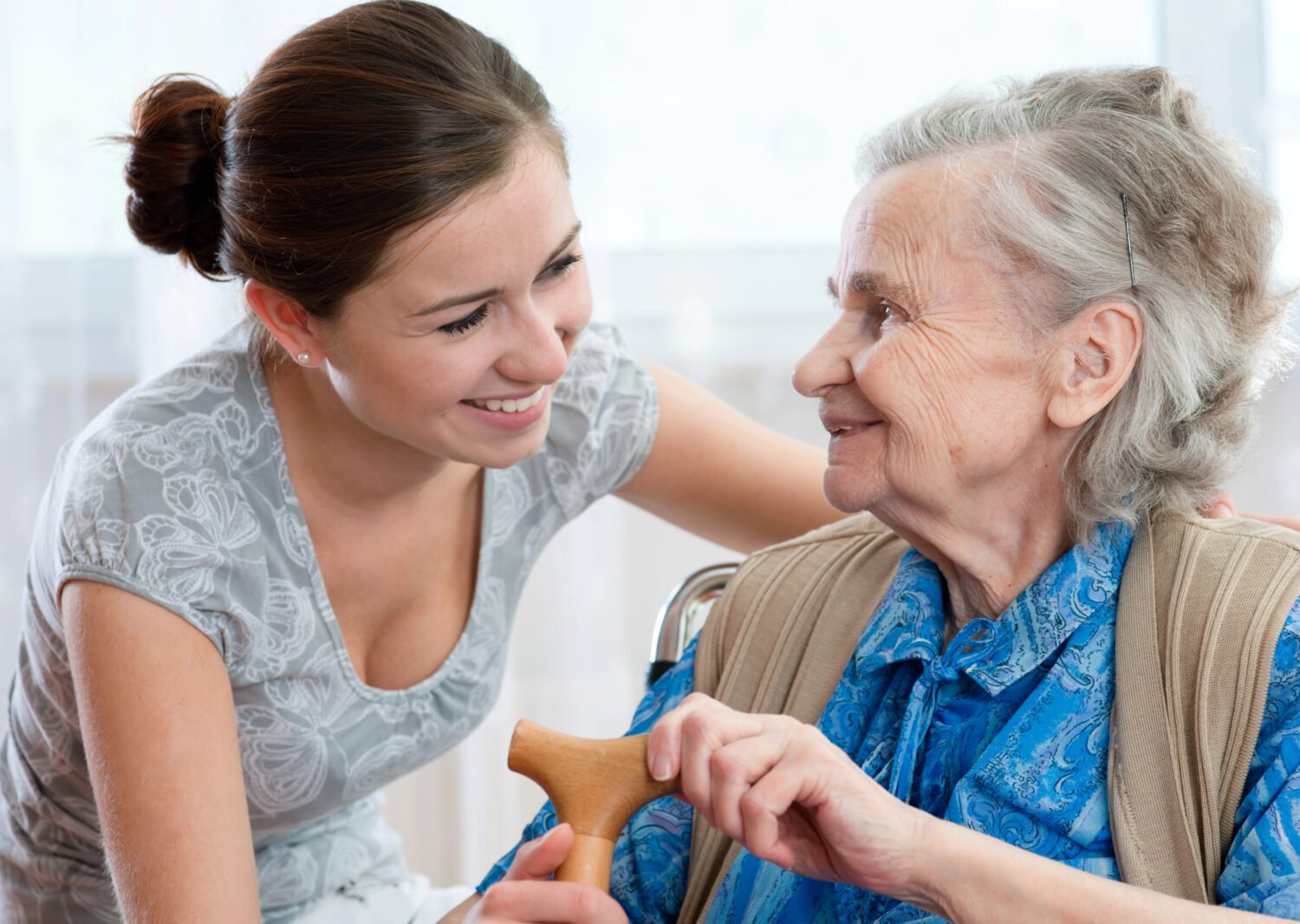More and more families are faced with providing their own home healthcare for loved ones due to escalating medical costs, unavailability of support, and because they want their loved one to be close to home rather than in a facility. However, this is no easy task. Two professionals in the home healthcare field provide their best tips here to help ease you into caring for your loved one.

When taking care of someone at home, it’s not just about the everyday stuff – you also need to know how to handle emergencies. Learn basic first aid, understand when something is really wrong, and set up a plan for your family to communicate during emergencies. This way, you’re ready for unexpected situations, and it links up with the survival mindset of being prepared for anything. Experts say combining these skills makes you more confident in looking after your loved ones at home.
My Experience with Homecare Nursing
I am a Licensed Practical Nurse, EMT, Wilderness EMT, phlebotomist, and CPR/ First Aid instructor. I also instruct disaster medicine with a well known firm and am currently working on my RN. In addition to all that, I work full-time and have done this over the last several years. In addition to this training, I have had the opportunity to care for two relatives on hospice.
I have noticed that many people who are into survival and prepping want to know how to suture a wound or remove “the bullet” or some other “glamorous” task. But the more training I receive and practice in the field, the more I realize how much I do not know, in spite of all my training and experience. It’s no easy task to provide the best possible home healthcare, even during the best of times, much less during an emergency of some sort.
The first steps are to learn the basics and have the proper supplies ready.
NOTE: I strongly recommend anyone that is a caregiver to take the CPR class for medical personnel. It gives much more lifesaving info. But, if only the basic is available, then that’s better than nothing. Fire stations usually offer Basic CPR, and a good First Aid Class is a necessity.
The Most Neglected Medical Training
The most ignored area in medical training that I have seen in survival circles is homecare nursing. Per longtermcare.gov, a person age 65 has a roughly 70% chance of needing some type of long-term care services and supports before they die. However, it’s not just the elderly who may require homecare nursing. Anyone with special needs may also require more specialized care.
So while it may be a boring subject, but it’s an absolute necessity to keep your patient alive and viable.
It saddens me when I deal with a person (young or older) who has contractures, bed sores, develops pneumonia, or just fights to maintain some level of independence because no one in their life provides basic homecare nursing skills.
A Basic Overview of the Homecare Nursing Skill Set
Good basic patient care can be learned and mastered by becoming a CNA (Certified Nursing Assistant). The job of CNAs is to take temperatures and blood pressures, give bed baths, turn, and feed patients. They help monitor for bed sores, pressure areas, changing incontinent patients, and providing basic necessary care. It may not have the glamour or prestige of removing a bullet, but basic patient care is actually more necessary.
Bed Sores
Not everyone understands that a person cannot lie in bed for hours, days, or even weeks without someone really involved in their care. An immobile patient must be turned and checked every two hours. If you turn them and see a red mark on their side, butt, or back, you are probably looking at a bedsore very soon. Bedsores can kill patients!! I have seen Stage 4 pressure ulcers that go to the bone. Do not let that happen. Patients need to be clean, dry and intact – always!
The caregiver needs to study some pictures and articles on skin breakdown. It happens quickly, and once there is a breakdown, even just a small spot, it will always be the first place for the next breakdown. The tissues underneath have now been weakened and will never be strong again. Also, what you see on the surface of the skin is actually larger and deeper than you can see. It’s important to never rub the area of redness because it further breaks the skin down. It’s okay to lotion the area, but don’t rub thinking it will stimulate the blood flow to the area.
Daily Exercise
Bed-bound patients need to be exercised daily to help prevent contractures, a shortening or distortion of muscle or connective tissue. Contractures ultimately have the patient going into a fetal position. In nursing school we have worked with patients that required four adults to just change them and get them out of bed.
Very, very sad.
This exercise involves having the patient move all their joints through their full range of motion. One or more caregivers may have to help with this. Start with the head by going side to side and rotations, move to the neck, shoulders, arms, fingers, knees and toes.
It’s vital to know the correct way to do this, though. If done incorrectly, it can cause harm. Ask a doctor or physical therapist for instructions — a video format will be most helpful.
One simple technique is to use several pillows to use to prop patient into position when rolling for diaper change or for repositioning turning of patient.
Pneumonia
I also use incentive spirometers for lung exercises, which can help prevent pneumonia. If that is not available, try chest physiotherapy. Try cupping your hands and have the patients on their side. Use your cupped hands and tap on the patients back to loosen anything in the lungs. Be care to not use too much pressure but tap several times a day.
There’s a breathing exercise that I repetitively tell everyone is an excellent substitute for an Incentive Spirometer. Most people do not have a spiromete handy, don’t know how to use it, and if the patient is immobile, the person assisting will find it difficult to achieve any results. In that case, have the patient do deep breathing, hold the breath, and then breathe out slowly through whistle lips (pursed lips). This is easy to understand and accomplish, and it’s one less piece of equipment to keep track of.
Homecare Nursing Supplies
- Gloves – No latex. I prefer Nitrile for durability (available at Costco). It is impossible to have too many. I personally have 10 –12 cases. Each case has 10 boxes of 100 gloves. (Latex allergies are fairly common; there are nitrile allergies but they are far more unusual.)
- Bed pan
- Urinal – Male and female.
- Wash basin
- Emesis basin
- Bed pads for incontinence – Reusable or disposable. The reusables are strong and can be used to help turn/ reposition your patient
- Incontinence briefs (diapers) and pull-ups although these are not for immobile patients
- Baby wipes – You can never have enough.
- Thicken – Makes liquids thick for people with swallowing difficulties.
- Nosey cups – Plastic cups with the nose section cut out to help with liquids for patients with limited mobility
- Incentive spirometers – Lung exercisers.
- Walkers
- Crutches
- Cane – Carbon Fiber is far lighter than other options.
- Bedside commode
- Gait belt – Assistive belt to help a patient ambulate.
- Thermometer
- Oximeter – Necessary to keep track of blood oxygen level.
- Blood pressure cuff and stethoscope
- Manual wheelchair
- Hand Cleaner
- Clorox and sprayer
- Bed with hand cranks – I designed a “raised platform bed” for homecare nursing because I could not justify a hospital bed with hand cranks. The raised bed allows me to care for the patient without killing my back.
- Twin-sized flat sheets. Fold lengthwise for a perfect draw sheet which helps with turning patients on your own.
- Tons of inexpensive wash cloths and a diaper bin. Cleaning up a soiled patient requires a clean wash cloth with each wipe so to not spread bacteria to other parts of the body. Buy white cloths so they can be bleached with each wash.
Sourcing Supplies
Other than your typical medical supplies store, you may be able to find some items second-hand.You’ll want to check them closely for quality and function. Ask to plug items in or for batteries to test them.
Gloves, incontinence pads, diapers, wipes, and other items used repetitively can be ordered online from a DME company rather than from Walmart or Costco/SAMS. If it’s several people being cared for, the items might be able to get a discount or wholesale price. Shop around online.
Strategies for Turning Patients
The first strategy for turning patients is raising the height of the bed. I believe that Medicare/Medicaid now lets the patient have a mechanical bed so the caregiver doesn’t have to crank the bed up. In my last round of home care, I never encountered a crank bed. But, I do agree with having the bed at a higher height if the patient is totally immobile. There are some bed lift blocks that can be bought to raise the bed by about 4 inches.
The incontinence pad (CHUX), while small, does allow for some turning, but when having to change a diaper or to clean a soiled patient/soiled pad, you don’t have much material to work with. A draw sheet works for turning and when a helper not available for cleaning and lets the CNA or the caregiver clean and move the immobile person. So, add several twin sized flat sheets to this list of need to haves. You can buy twin flat sheets at resale/charity shops – stores no longer sell single flat sheets.
NOTE: Be extra careful of allergies. If a patient is sensitive to detergents, it can start the skin irritations that end up in sores.
Consider Mental and Emotional health, Too
When my mother-in-law was confined to a rehabilitation center for four months during the COVID-19 lockdown, her mental health suffered greatly. As I was allowed to visit her during the last weeks of the local lockdown, I immediately put up a whiteboard with daily information and reminders for her.
I printed out large, 8×10 photos of her family members and put those on the wall where she could see them. I used her Android phone to play her favorite music and made a graph on the whiteboard so she could see improvements each week with her physical therapy.
Nothing is more discouraging and degrading than being treated like part of the furniture, so provide the types of music, podcasts, Audible books, and TV shows your patient prefers. Set regular times for conversation and visits with family and friends.
Expert Tip
Establish a routine and maintain open communication. Consistency in caregiving tasks helps create a stable environment for your loved one, and regular communication with healthcare professionals ensures you stay informed about any changes in their condition, allowing for prompt adjustments to the care plan.
FAQ
Family caregivers should be trained in basic first aid, know how to recognize medical emergencies, and establish a family emergency communications plan. This ensures a prompt and coordinated response in critical situations.
It’s crucial for caregivers to prioritize self-care, seek respite when needed, and communicate openly with other family members to share responsibilities. Building a support network is key.
Common challenges include balancing caregiving with other responsibilities, managing emotional stress, and adapting to changing health conditions. Strategies for coping and seeking external support are essential.
Family caregivers should familiarize themselves with legal aspects, such as power of attorney and advance directives. Understanding insurance coverage and exploring available financial assistance can also be crucial.

Final Thoughts
This is just a starting point to help you begin to think about skills and supplies you may want to add to your repertoire. While it is far from complete it should give you an idea about needs for your patients. The American Red Cross may offer classes in your area to provide more training.
Remember, everyone in your family or group will need training and practice. Creating a Grab-n-Go binder with information will be helpful for you and for anyone who assists you with homecare nursing. Someday, the patient may be you, and these simple procedures may save a life, including your own. Also and most important, many of these tasks are not fun. Many are done for infants and young children without any thought. Please be kind and offer privacy and dignity to your patients. Treat them as you would want to be treated.
What homecare nursing items would you add to this list?
Original guest post by Dave, LPN, EMT, WEMT. Originally published February 3, 2011 and updated.



















